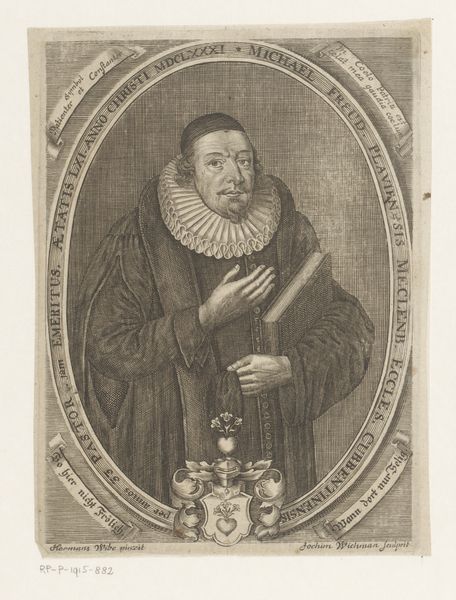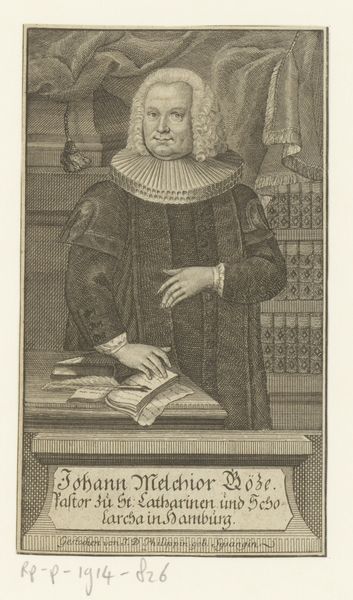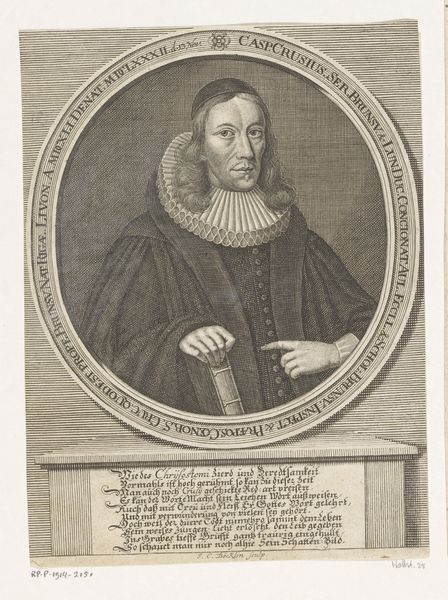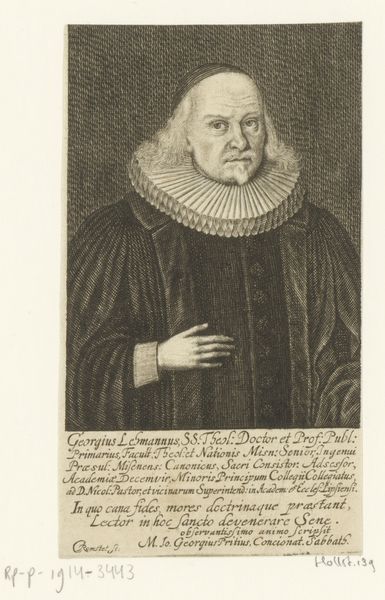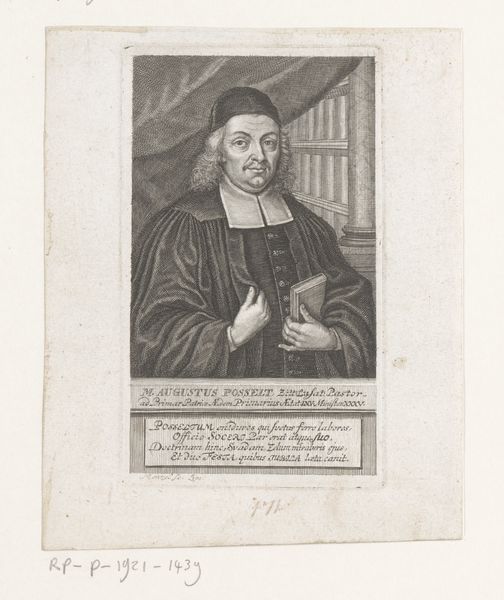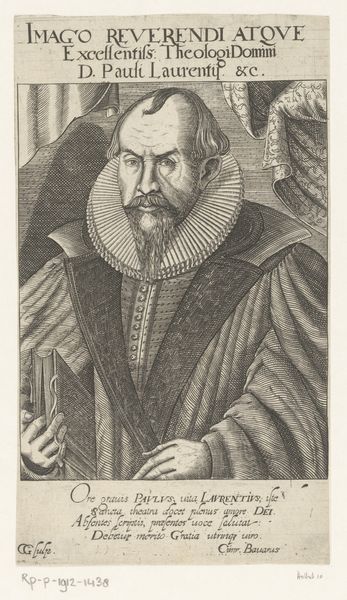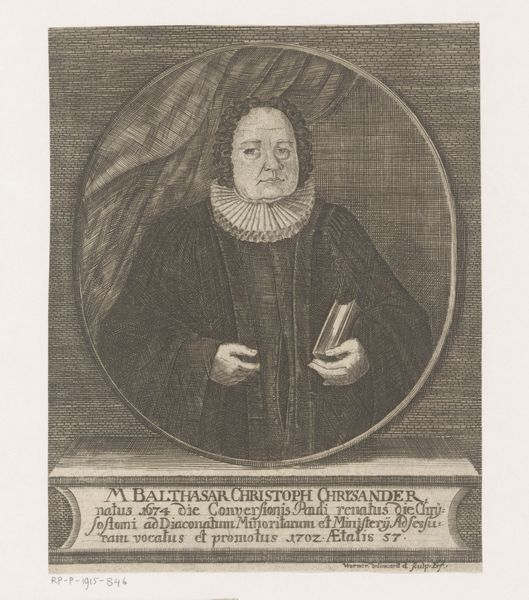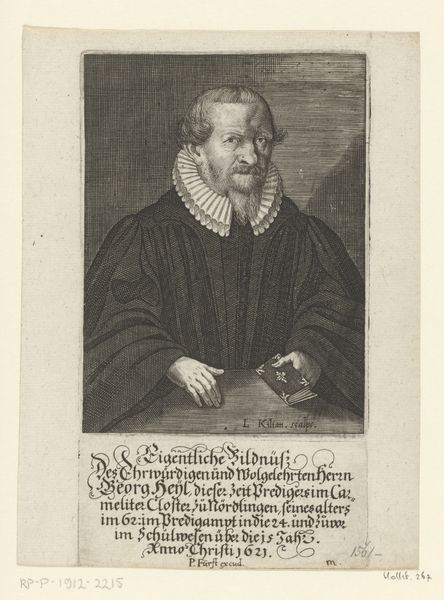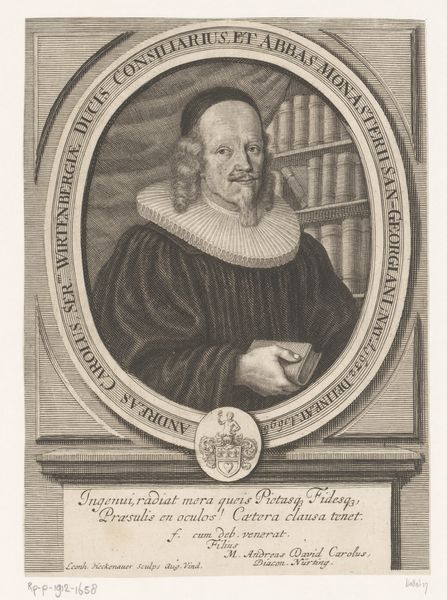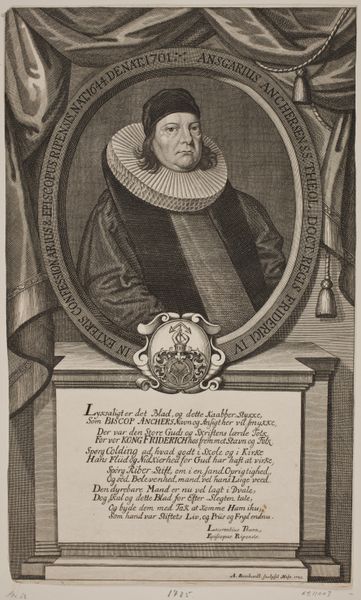
print, engraving
#
portrait
#
baroque
# print
#
old engraving style
#
portrait reference
#
engraving
Dimensions: height 148 mm, width 91 mm
Copyright: Rijks Museum: Open Domain
This is Johann Benjamin Brühl's portrait of James Ussher, made with engraving techniques. Engraving is an intaglio process, meaning the image is cut into a surface, here a metal plate, and the incised lines hold the ink. Notice the precision and detail achieved through the careful manipulation of tools like burins and scrapers. The texture of the paper, combined with the varying depths and widths of the engraved lines, create a rich tonal range and visual depth, lending a sense of realism to Ussher's likeness. The social significance of engraving lies in its capacity for reproduction and dissemination of images, contributing to the circulation of knowledge and ideas. The act of creating an engraving is labor-intensive, requiring skilled craftsmanship and patience. Yet, once the plate is prepared, multiple impressions can be made, allowing for wider accessibility to art and information. The combination of technical skill and replicability underscores the complex relationship between art, labor, and commerce in the 18th century. Paying attention to the materials and processes used sheds light on the artistic intentions and the broader cultural context in which the work was created.
Comments
No comments
Be the first to comment and join the conversation on the ultimate creative platform.
